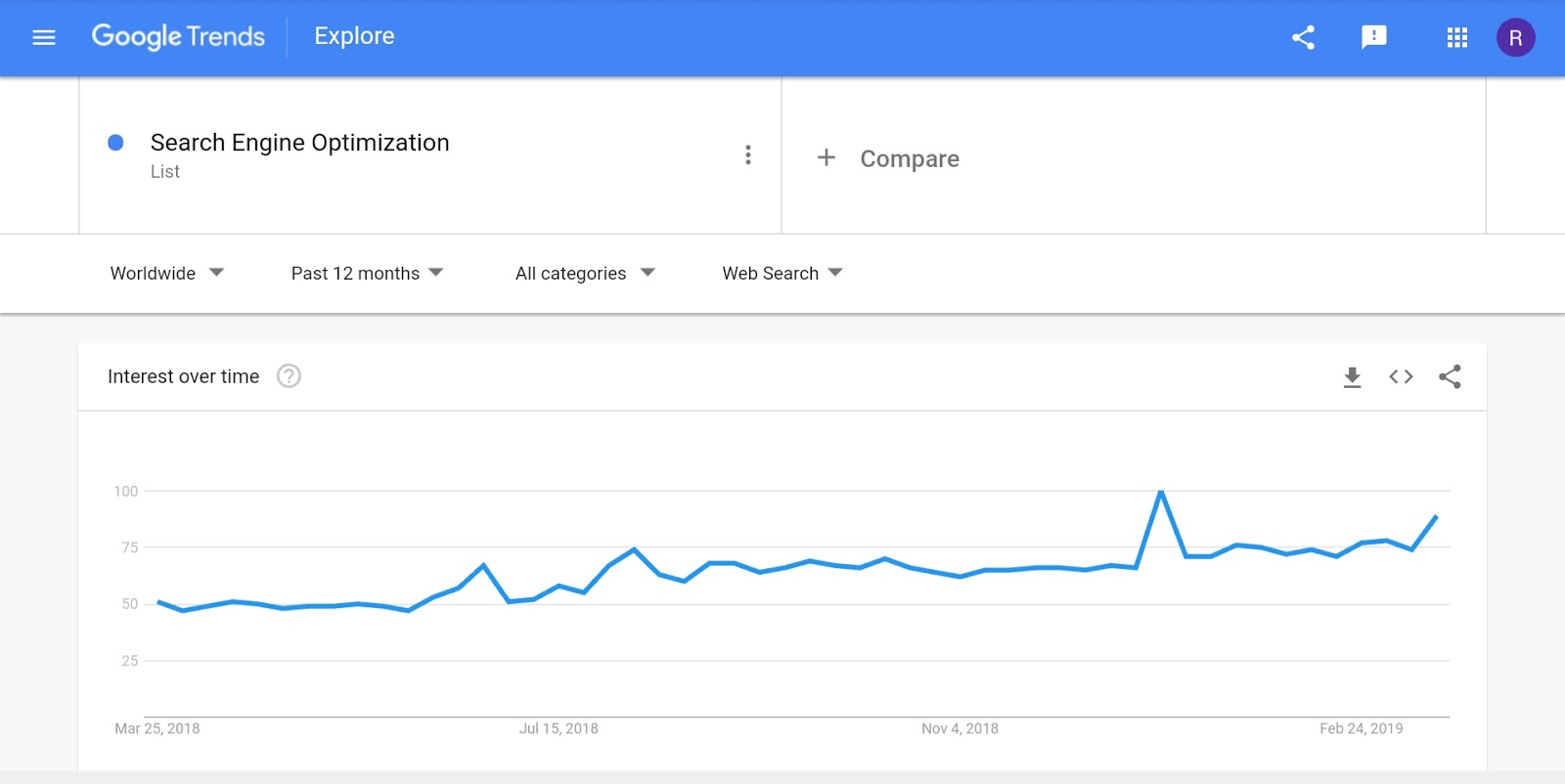Make Money Blogging (pt 1): Start a Blog to Makes Money in 2019

Running a blog is a great way to drive quality traffic to your business, generate leads, sell stuff, and make money. Innovative companies understand the benefits of blogging. That's why they're taking advantage of the blogging tool to build connections and grow their income.
And that's why there are billions of blogs on the Internet today. In the February 2019 Web Server Survey, Netcraft pointed out that there were about 1,477,803,927 sites on the Internet in February 2019. And the figures keep increasing by the minute.
But starting and running a successful blog is no piece of cake. You should know what you are doing and how it is done effectively.
This post starts a short series we'd like to call "MAKE MONEY BLOGGING." The aim is to help you create and grow a successful blog — the type that ranks well on Google, gets thousands of readers, drives traffic to your online business, and makes you money.
What if you already have a blog? Well, you'll still benefit from the series as we'll share helpful details on taking your blog from zero to your first 1000 email subscribers and blogging mistakes to avoid.

Before we get down to the nitty-gritty of starting a blog, let's see why you should start a blog in the first place and how it can benefit you and your business.
REASONS WHY YOU SHOULD START BLOGGING
BLOGGING GIVES YOU A VOICE
We all have a story to tell, an experience to share, and something to teach. Having a blog gives you the platform to express yourself and be heard. It's a way to share your thoughts and knowledge in an area or subject you are familiar with. It could be knowledge about personal finance, health, technology, or even cooking. Blogging allows you to teach, share and connect with people who share the same interest as you and can benefit from your experience.
BECOME A BETTER WRITER OR CONTENT CREATOR
When you do something consistently, you'll become better at it. Writing on your blog regularly will help sharpen your writing skills. As you write blog posts, you begin looking for ways to improve, leading you to read posts on honing your writing skills. From there, you'll start implementing some writing techniques to make your writing more engaging and appealing to readers. And by so doing, you'll become a better writer. Writers should include certain tools in their toolkit to elevate quality content, such as an online plagiarism checker, a grammar checker, and many more.

A WAY TO MAKE MONEY
This is what this post is focused on — how to start a blog that makes money. Yes, you can make money blogging as long as your blog has a considerable amount of traffic. Here are some examples of bloggers who are making a killing blogging:
Jon Morrow of Smart Blogger has made over $5 million from his blog. And what about Neil Patel? He makes $400,000+ monthly on his blog. Making Sense of Cents founder and blogger Michelle Schroeder made over $1,500,000 in 2018 alone from her blog. That's huge!
This isn't to say that when you set up your blog, you'll start earning these figures immediately. No! But you will make a decent figure if you stay at it and work hard.

Once your blog starts getting traffic, all you have to do is monetize it — creating your online course or ebook, offering services on your blog, selling digital products, affiliate marketing, consulting, etc.
We published a post in which we shared ways to monetize your blog. Check it out:
Top 10 Ways to Monetize Your (SEO-Optimized) Blog
BECOME AN EXPERT
Experts are not born but made. It begins with getting familiar with a particular topic or field. It's committing to a deliberate practice of a speciality.
Here, let's say you start a blog which focuses on SEO. This will lead you to learn more and more about SEO as you perform research before writing your posts. And with time, you'll become an expert or the go-to guy in SEO. This will lead to more career growth and business opportunities.
BETTER SEARCH ENGINE APPEARANCES
And talking about SEO, having a blog increases your chances of appearing more on the front page of Google and other search engines. The more blog posts you publish, the more of your web pages that Google will index, and ultimately, the more traffic and leads you'll have coming to your website.

BUILD YOUR BUSINESS ONLINE
Let's face it. The world has gone digital. Everything is happening here on the web. From learning, making a purchase, making an inquiry, and building relationships to making money, they are now made possible online.
As of January 2019, the global digital population rose to 4.4 billion, according to Statista.

This figure is said to be active internet users. And it also accounts for more than half of the world's population, which is 7.7 billion, as Worldometers reports.
This is simply an indication that half of the world is online. Sure, the Internet is a vast marketplace. And for your business, it's an excellent opportunity to reach out to many potential customers and expand your business. A way to go about it is to start a blog.
A blog is an online office where people can come in to see what you are offering, get information about you, and ultimately make a purchase.
With these reasons to spur you up to start your blog, let's now look at the step-by-step process of creating a successful blog.
STARTING YOUR BLOG
Here are the steps to follow in starting a profitable blog:
STEP #1: CHOOSE A PROFITABLE NICHE FOR BLOGGING
Deciding on a good niche to blog about is the first step towards creating a profitable blog.
First, you'll have to pick a niche that targets a well-defined, specific audience. Avoid targeting everybody. Otherwise, you'll already be setting your blog up for failure.

A piece of general advice is being fed online about picking a niche to blog about. It says:
"Follow your passion. Find a niche that you love and blog about it."
We are sure you read this post because you want to profit from your blog. And you aren't starting a blog as a hobby.
Here's the thing:
The profit isn't in the passion but in the popularity.
If you understand how the search engine works, you'll know it provides only relevant results that meet the searcher's intent. You should know this: search engine users always have a plan before hitting the search button on Google. Some are even more specific with their search.
The search engine generates results based on something other than passion but on what people are searching for. And that's the problem with blogging on what you are passionate about.
Are people interested in it and searching the web for it?
This is the question you should ask yourself before choosing a blog niche. And while we aren't ignoring the fact that people should blog on what they can comfortably write on — so as not to lose steam in the long run or sound like a broken cord in their writing — make sure you have a considerable target audience (with monetary value) for what you are blogging about.

And how do you know what people are interested in or searching for online?
- Use Google Trends: Google Trends is a free search tool used to know the search terms that are currently trending, the historical popularity of a topic (whether it is declining or growing in popularity), the search volume index of a keyword, phrase or subject and the geographical location of searchers. The data is presented in a graph form as well as text information. Google Trends is a way of looking into the mind of people to know how they think.
Head over to trends.google.com and type in the search term you want; it will show you results from a specific period. With it, you can know if there's an audience for your selected niche before making a decision.
Here's an example of the search term "Search Engine Optimization."

- Use Smallseotools: Some of our tools, such as the keywords analysis tools, can help you determine the popularity of the niches you have in mind.
When it comes to picking a profitable niche, it boils down to knowing what people want.
People always have something in mind whenever they want to use the search engine. They are looking for information, solutions to their problems and ways to improve. If you can position your blog as the place to find the answers, you will make money. It's about solving a problem.
And to this effect, here are some profitable niches to start a blog.
Profitable Niches for Blogging
These niches are broad. However, there are different sub-niches under each one. So, it depends on the approach you take.
- Personal Finance
Blogs under personal finance focus on helping people grow their income and cut down on expenses.
Here are some examples:
- Get Rich Slowly — blogs about financial freedom and retirement.
- Afford Anything — blogs about income properties, real estate, etc.
- Mr Money Mustache — focuses on frugal living, budgeting tips, credit cards, loan advice, etc.
2. Health/fitness/wellness
This niche is quite broad and attracts lots of traffic. The people using the search terms around this niche are looking for a way to stay healthy and be in good shape. An excellent way to leverage the traffic here is through affiliate marketing because they are looking for products to help solve their needs.
Under this niche, you can find some blogs focusing on weight loss, building muscle, living healthy, eating healthy, and more.
Here are some examples:
- Wellness Mama
- Precision Nutrition
- My Fitness Pal
Other profitable niches are digital marketing, self-improvement, technology, productivity, food, beauty and makeup, travel, home decor, relationship, etc.

Okay. So you've settled for a niche to focus on, which will determine your target audience. What's the next thing to do?
STEP #2: CHECK OUT POPULAR BLOGS IN YOUR NICHE
Spy out on the popular blogs your target audience is reading about. What type of content are they doing? What strategies are they using to promote their pieces? How are they collecting emails? These and more are some of the questions to ask.
Let's say your niche is in personal finance; you will look up the popular blogs under the place and study their strengths and weaknesses.

All Top and Feedspot are great for this.
Here's how to go about it:
- Use Alltop to go through the blogs while you pick out some.
- Next is to enter the domain name into Buzzsumo to know the content performing the most.
- Check the pattern used to write the content and headlines.
- Get a spreadsheet to save the content ideas for future use. They are to be used when you start writing your blog posts.
STEP #3: USE MEDIUM TO TEST YOUR IDEAS FIRST
Before you start looking for a blogging platform, let's test your idea on a free platform to see if it'll fly.
So we recommend using a platform like Medium.

Medium is a free online publishing platform that allows publishers, writers, and bloggers to publish their ideas openly. It attracts tons of traffic from the web - over 30 million monthly readers. By posting your content on Medium, you'll get to know the number of people interested in your type of content versus having to first invest in paid web hosting only to find out that only a few people care about what you're offering.
To use the platform:
- Sign up for a free account
- Use the headlines you gathered during your research and write a blog post
- Be sure you choose the proper interest to get it read by them.
- Carry out an outreach campaign to the popular blogs you checked out earlier. Email them and ask them to should share your post. You can validate yourself with the approach and build your audience.
If these famous bloggers end up sharing your post, it will mean more visibility and that you are on the right track. Also, if you have an encouraging response from your target audience, you're definitely unto something.
If none of the above, you should rethink and start with a new blog idea.
STEP #4: GET A CLEAR DOMAIN NAME
After you're successful with your testing and your content is gaining traction, it's time to take your blogging escapade to the next level. Get a domain name that fits your needs.

This is the name by which your blog will be known. So make sure your domain name is as straightforward as possible.
Here are the features of an exact domain name:
- It captures the reader's attention
- It's memorable
- It instantly tells what the blog is all about
- It can be easily pronounced.
Let's see some examples of an exact domain name.
- Backpacking Africa for Beginners — You can immediately tell that this is an African travel blog. On this blog, Valeria shows the good side of Africa with many stories and photographs. She also shares many valuable tips and the best plans for an African trip.
- KillerStartups.com — You don't need to be told that this blog is about sharing all kinds of information about and for startups.
- Apartment Therapy — You'd be right to think that this blog is a home makeover interior design community sharing design lessons, DIY how-tos, shopping guides and expert advice for creating a happy, beautiful home.
These domain names are clear enough to tell people what they are about. For instance, when we picked our domain name, Small SEO Tools, we made sure it was clear and very descriptive of what we wanted to offer.

Have all the domain names been taken? You can use these three methods to get an exact domain name:
- Name the audience: This method is quite simple. Mention the target audience in the domain. Examples: Workoutmummy.com, Problogger.com
- Name the topic: If your blog is centred on a particular topic, look for a domain name that clearly describes the issue. Examples: SmallSeoTools.com, Bloggingwizard.com
- Name the benefit: With the benefits readers stand to gain when they read your blog, you can use it to come up with a domain name. Example: MakeALivingWriting.com, BeMoreWithLess.com.
Don't stop at this method. You can tweak the domain name by using a domain names generator like NameMesh or Dot-o-Mator to help you generate more domain names.
After you are done researching a domain name, check if the name you've chosen is still available or not. Hostinger provides a convenient instant domain search feature that you can use for this purpose. Enter the domain name and click on search on the homepage to check its availability. If it's taken, then you have two options here. Either you go back to the drawing board to come up with another name, or you buy a premium domain name if it is available for sale.
Now, let's briefly talk about the domain extension. Which should you go for?
Different domain extensions are available. However, the most popular one is the ".com" extension. It is followed by ".net" and ".org."

We advise that you go for ".com" if it's still available, as it is the most common default extension that users type in when visiting your website.
STEP #5: CHOOSE A WEB HOST
A web host is where your website will be stored on the Internet so users can view it. You pay a fee to a hosting company to keep your website running on their server. There are many web hosting companies out there. Examples are Siteground, Bluehost, GoDaddy and more.

Just check out their specs, features, and history to make a decision that favours you. What specific specs to look for? Well, be on the lookout for speed, security, and support.
STEP #6: CHOOSE THE RIGHT BLOGGING PLATFORM
Here, you will have to go for a platform that'll suit your site. Many blogging platforms exist, including Joomla, Drupal, and Blogger, but WordPress rules them all.
According to the latest data, WordPress is the most popular content management system used by over 60% of the entire websites on the Internet.

- It's free and easy for beginners.
- It's user-friendly
- There are tons of themes and plugins to use
- It has the most significant amount of free resources and a great community that offers support to users.
And because many people use WordPress, some web hosting companies like Siteground and Bluehost have a unique plan for WordPress. Some web hosting companies focus entirely on managed WordPress services, like WP Engine and Kinsta.
When your hosting account is ready, log in and see the WordPress version; click "Install WordPress" to start the installation process. It's super easy.
STEP #7: SET UP YOUR WORDPRESS
In setting up your WordPress, there are certain things to do:
- Install a WordPress theme: WordPress has many themes you can choose from to design your blog to your taste. Stay calm by their numbers; go for the music that will reflect what you want to blog about. There are also premium themes from companies like Elegant Themes, StudioPress, and theme marketplace, ThemeForest.net.
- Install WordPress plugins: WordPress plugins are little software that gives more functionality to your WordPress website. With plugins, you get more features on your site. There are many plugins; however, only use the plugins you will need. Like 5-10 plugins to avoid security liability. Some of the most useful ones include Yoast SEO plugin, W3 Total Cache, Smush: it, Wordfence security plugin, Updraftplus, Google Analytics plugin, and many more.

STEP #8: MOVE YOUR CONTENT FROM MEDIUM TO WORDPRESS
Now, it's time to move into your new blog. Medium enables posts to be exported and imported into WordPress. You can use this feature to move your posts from Medium to WordPress.

CONCLUSION
Having listed these processes, when will the money start coming in?
Well, your blog is now up and running. You'll need to focus on improving the blog, creating high-quality content, getting traffic, performing SEO, promoting your blog on social platforms and building your email list.
It will take time, but it's worth it.











